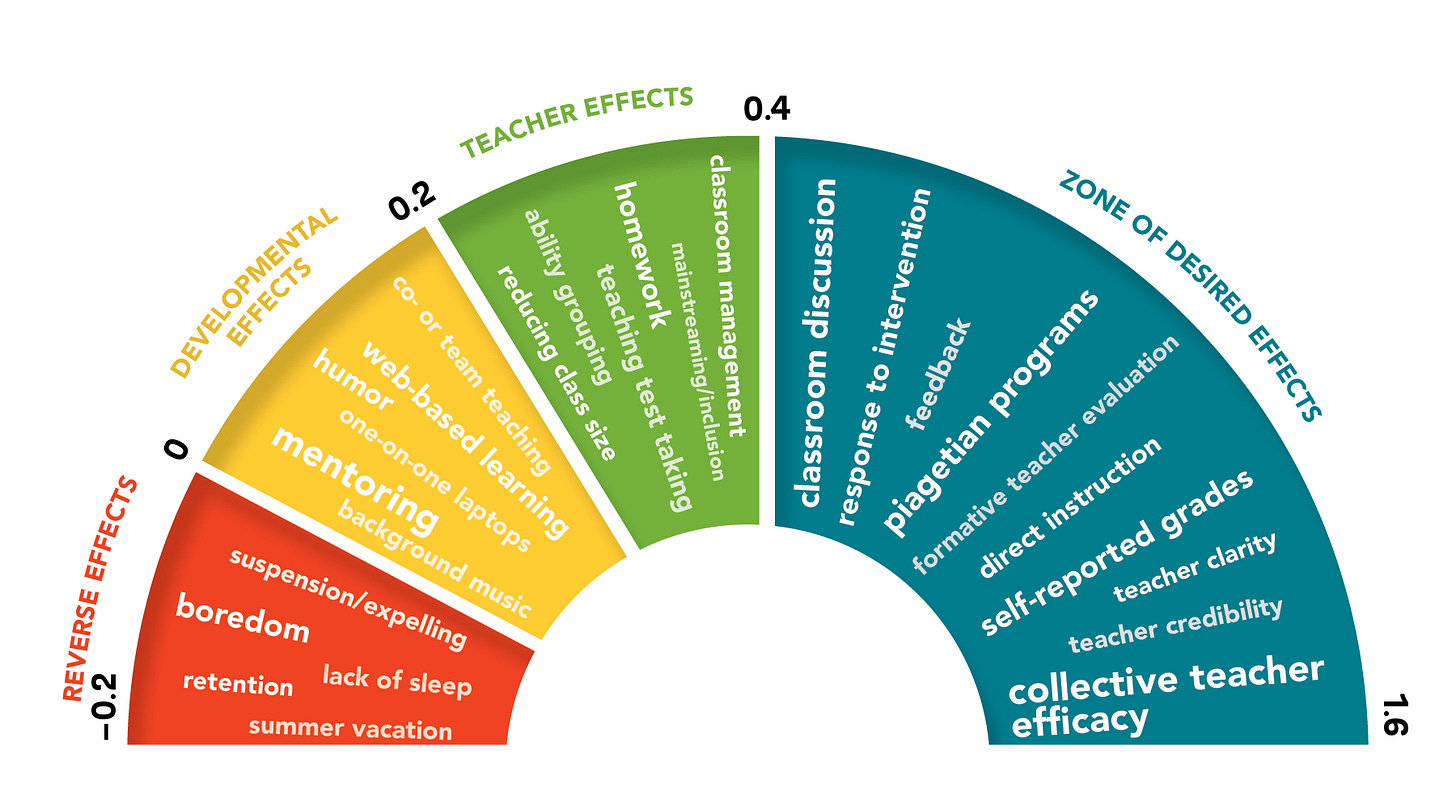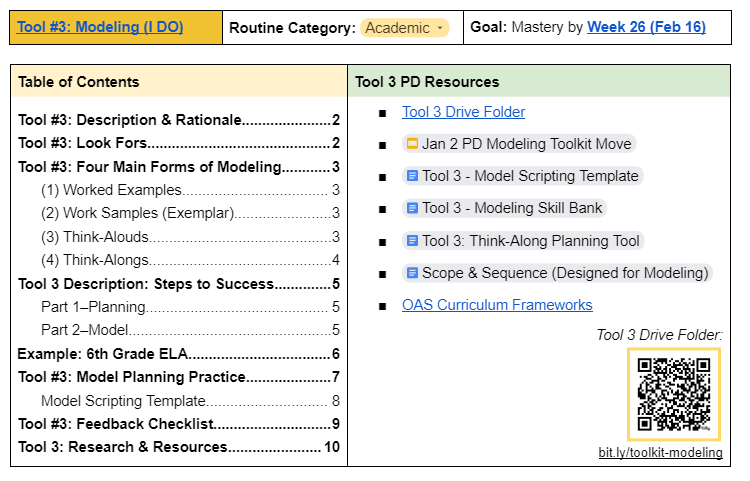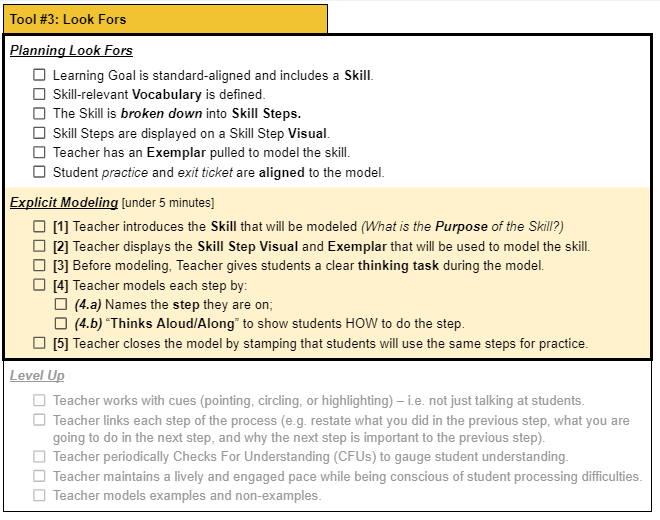Less is more: narrowing to a single strategy
What we can learn from Monroe Demonstration Academy about actionable clarity and teacher collective efficacy
If you read “What do you want for dinner?” you have already learned about the concept of “choice overload” and its implications for schools. This issue continues that story by profiling the work of one school (Read on. Trust me. There’s a Google folder you will want).
Monroe Demonstration Academy has transformed since 2020. During COVID, the student population rose from approximately 250 to around 800 due to district-level shifts. This exponential growth required an even more thoughtful investment in human capital to meet the needs of students.
Monroe was not immune to the teacher shortage and retention challenges. Before their transformation, the school’s teacher retention hovered around 60%. Not surprisingly, without a consistent corps of effective educators, student proficiency on state assessments was less than 1% of students in 2021.
When Principal Dr. Rob Kaiser was charged with leading the transformation, he knew his central focus must be building his teachers' capacity to ensure quality instruction in every classroom while keeping his eye on longer-term investments in building trust with families and the community.
Step into Dr. Kaiser’s shoes: 85% of teaching staff have less than 2 years of experience, students have low proficiency, and the student population exploded overnight.
Dr. Kaiser required one thing: actionable clarity.

Actionable Clarity
As defined by Elaina Noell, actionable clarity entails providing clear, understandable, and precise directives or instructions that individuals can readily act upon, eliminating ambiguity and enabling decisive action.1 Clear articulation of priorities and decision-making criteria establishes the foundation for the actions and behaviors that drive a school’s function. Clarity fosters stakeholder accountability and trust.
Dr. Kaiser remembered his experience as a beginning teacher. Since teaching is one of the most complex roles, he knew that breaking his expectations into smaller, step-by-step chunks would support their development. His administrative team and learning coaches hustled across the school to provide one-on-one support, tracking action steps. He partnered with a nonprofit organization, the Teaching and Leading Initiative of Oklahoma (TLI), to build leadership capacity and move teachers. And it was working. The winter NWEA MAP results showed that Monroe Demonstration Academy had the highest student growth of the middle schools in the district. But it wasn’t fast enough. We needed a more comprehensive strategy - the “Teacher Toolkit” was born.
Collective Teacher Efficacy
While individual teachers showed promising growth in mastering their action steps, Dr. Kaiser knew he needed to build collective efficacy. Educational researcher John Hattie conducted a meta-analysis of factors influencing student achievement, which quantitatively measures the impact of various educational interventions and practices. 2 The effect size represents the magnitude of the influence of a particular factor on student learning outcomes, with larger effect sizes indicating greater impact. Hattie suggests that an effect size of 0.4 represents the threshold for typical educational interventions. Factors with effect sizes above 0.4 are considered to have a more substantial impact on student achievement than the average year of academic growth.
Collective teacher efficacy refers to the shared belief among teachers in a school that they can positively influence students' learning, even in challenging circumstances. Hattie's research consistently identifies collective teacher efficacy as one of the most powerful influences on student achievement, with a high effect size of 1.57. This means that when teachers collectively believe in their ability to impact student learning positively, they can achieve more than four years' worth of typical academic growth in a single year. It underscores the importance of fostering collective teacher efficacy as a powerful lever for improving educational outcomes.
Monroe’s Teacher Toolkit
You may be wondering about the “Teacher Toolkit.” I cannot fully do it justice, so I will do my best, but it may be wise for you to click here. This is where we pause for applause for Mr. Ben Imlay.
Let’s break it down. On the front page you see a few things:
The teacher-level skill we are all working towards collectively
The target timeline for mastery
What you have at your fingertips to help you build knowledge and skills
You can look through the rest of this tool, but I want to point out the beauty: the look fors. This, folks, is what we call actionable clarity.
Actionable Clarity and Collective Teacher Efficacy
Actionable clarity significantly contributes to collective teacher efficacy by fostering an environment of trust, collaboration, and shared vision within the school community. When principals provide clear expectations, goals, and support for instructional practices, they empower teachers to collectively believe in their ability to make a difference in students' lives. Mike Schmoker, author of Leading with Focus, says leaders do this by regularly naming a narrow instructional strategy, providing feedback and coaching around that single strategy, and reflecting on its impact. 3
And less is more. Evidence suggests that establishing clear instructional goals, using student achievement data, modifying instruction based on data analysis, and aligning curricular emphasis among grade levels are effective practices for driving student learning and instructional improvement.4 By focusing on a few priorities, schools can allocate resources effectively and provide more targeted feedback to build collective efficacy.
Benefits of Narrowing
Narrowing instructional priorities in a school offers several benefits that can significantly impact student learning, teacher instruction, and overall school effectiveness.
Enhancing Student Learning
By setting clear instructional priorities, schools can focus on improving student achievement in core subjects, fostering critical-thinking skills, and addressing specific learning challenges. This focused approach allows for more effective resource allocation, tracking progress, and evidence-based decisions to support student success.5 Seeing concrete student progress helps teachers to see what they are capable of - collectively.
Elevating Teacher Instruction
Prioritizing teacher instruction is crucial for improving educational outcomes. By setting clear objectives for professional learning, leaders provide clarity and skill development to refine their instructional practices, adapt to diverse learning needs, and positively impact student learning. This focused approach enables educators to continuously assess and adapt their teaching methods to align with the school's objectives.
But remember: only practice moves practice. We can have a narrow focus but still not move teachers. The quality of these learning experiences matters greatly.
Building a Collaborative Learning Environment
Collaboration among teachers and students is another key priority that schools should embrace to foster a supportive and effective learning environment. When all teachers are clear on what they are collectively working towards, peer support is built in. There’s a peer group where you can compare notes as to whether you actually did the pre-work - a social accountability that reduces shame and builds connection. Ultimately, having a collective narrow focus can reinforce a shared purpose within the school community, leading to improved educational outcomes and a more cohesive learning environment.
In other words, narrowing instructional priorities can build collective teacher efficacy - 4 times the typical effect size.
Promising Narrow Strategies
Monroe started small and in a somewhat organic way. They knew they needed to select the right strategy to begin; it had to be something nearly every teacher could master and would significantly impact the students. They used observational evidence and trends to identify “get students reading” as a universal approach that all teachers could leverage regardless of their content area. It simply meant that if there were words to read, such as on a slide or directions on a paper, the students (not the teacher) would be reading them. The team thought that increasing engagement was one of the main benefits. But there were others, too. “Get students reading” got the teachers into the curriculum, which meant better planning. Sometimes, the lever that we pull can have magnificent ripple effects.
Other promising narrow strategies have been seen to show benefits to student learning, some of which Monroe demonstration has already pushed as part of their Teacher Toolkit:
Do Now: Engages students' thinking and activates prior knowledge, preparing them for learning.
Learning Goal/Opening: Clearly states the lesson objective, guiding students' focus and understanding.
Exit Ticket: Assesses student understanding and guides instructional adjustments at the end of the lesson.
Everybody Writes: Promotes active engagement and articulation of ideas through individual writing.
Turn and Talk: Facilitates peer interaction, communication skills, and collaborative learning.
Get Students Reading: Fosters literacy skills, comprehension, and a love for reading.
Partner Reading: Improves reading comprehension, fluency, and engagement through collaborative reading.
Modeling: Provides clear examples for students to follow, scaffolding their learning.
Guided Practice: Reinforces learning, provides immediate feedback, and supports skill development.
Independent Practice: Promotes self-directed learning, builds autonomy, and reinforces mastery through application.
School leaders can narrow to one of these areas to provide development, coaching, and support.
Monroe Demonstration Academy’s Journey
Fast forward a year from the early days of “get students reading,” Monroe is cruising. Clarity is the name of the game for Dr. Kaiser. The team has a plan, and they are on a mission.
From the fall of 2022 to the fall of 2023, Monroe Demonstration Academy doubled its reading proficiency. Teacher retention rose from 62% in 2020 to 86% at the end of 2023.
While the data shows auspicious results, they know they cannot take their foot off the gas. The once huge spikes are now just hills on the graph. They know that they must continue to help teachers see the impact that they collectively have on student achievement. This is Dr. Kaiser’s next charge to keep collective teacher efficacy alive at Monroe.
Keys to Narrowing
What can we learn from Monroe Demonstration Academy’s road to transformation? First, we can learn the incredible power of narrowing an instructional focus for all teachers to work towards. We can also learn some of their keys to success:
Number 1: Select the right strategy
Use all forms of data—including observational data—to determine what is the highest leverage for your school, grade level, or classroom. Leaders must assess needs and use research. Without a good rationale, all change will fall flat.
Number 2: Create an appropriate and human-centered approach to accountability
Be careful not to fall into the compliance trap. We want all teachers to demonstrate a specific skill and feel empowered, which can sometimes feel conflicting. Recognize that not all people will welcome your clarity with open arms. People take working with, and we, collectively, are doing this. Also, don’t be a jerk.
Number 3: Avoid detours
To maintain focus and efficiency in professional development and coaching capacity, you must avoid distractions or unnecessary deviations from your selected instructional foci. There are a lot of priorities and things on people’s hearts and minds. It can be easy to let a school situation or a new shiny “program” distract. Keep focused on the mission to get 100% of teachers to implement the instructional strategy you identified based on sound data and research.
Number 4: Build capacity at all levels
School leaders, assistant principals, department heads, area superintendents, teaching assistants - heck, the custodial staff - everyone should know how to execute the instructional strategy. If that bus driver were asked to substitute in the classroom tomorrow, they would know what to do and make a valiant attempt.
Number 5: Give resources people will actually use
Please don’t send me the link. I need to know how to use the link. Consider all of the barriers that would hold people back. Or consider what they need to actually do what is being asked of them (again, at every level). Resources should be something people practice with because only practice moves practice.
Conclusion
Monroe Demonstration Academy's journey showcases the transformative power of narrowing instructional focus and implementing actionable clarity in driving instructional improvement. Under Dr. Kaiser’s leadership, the school has witnessed remarkable growth in student proficiency and teacher retention - although there’s so much more to do. Their success underscores the importance of strategic decision-making, human-centered accountability, and maintaining focus.
Noell, E. (2021). Inspiring accountability in the workplace: Unlocking the Brain’s secrets to employee engagement, accountability, and results. Elaina Noell. https://www.inspiringaccountability.com/
Hattie, J. (2018, October 12). Collective teacher efficacy (CTE) . VISIBLE LEARNING. https://visible-learning.org/2018/03/collective-teacher-efficacy-hattie/
Schmoker, M. J. (2016). Leading with focus: Elevating the essentials for school and district improvement. ASCD.
Donohoo, J., Hattie, J., & Eells, R. (2018, March 1). The power of collective efficacy. ASCD. https://www.ascd.org/el/articles/the-power-of-collective-efficacy
Pierce, S. (2019). The importance of building collective teacher efficacy. Leadership Magazine. https://leadership.acsa.org/building-teacher-efficacy
Langfeldt, Jennifer, "Principals' Empowering Leadership Behaviors and Collective Teacher Efficacy, What's the Relationship" (2021). Educational Leadership Theses, Dissertations, and Student Creative Activity. 11. https://digitalcommons.unomaha.edu/edleadstudent/11
DeWitt, P. (2023, November 14). Want to drive student learning and instruction? pick 3 priorities (opinion). Education Week. https://www.edweek.org/leadership/opinion-want-to-drive-student-learning-and-instruction-pick-3-priorities/2023/11








